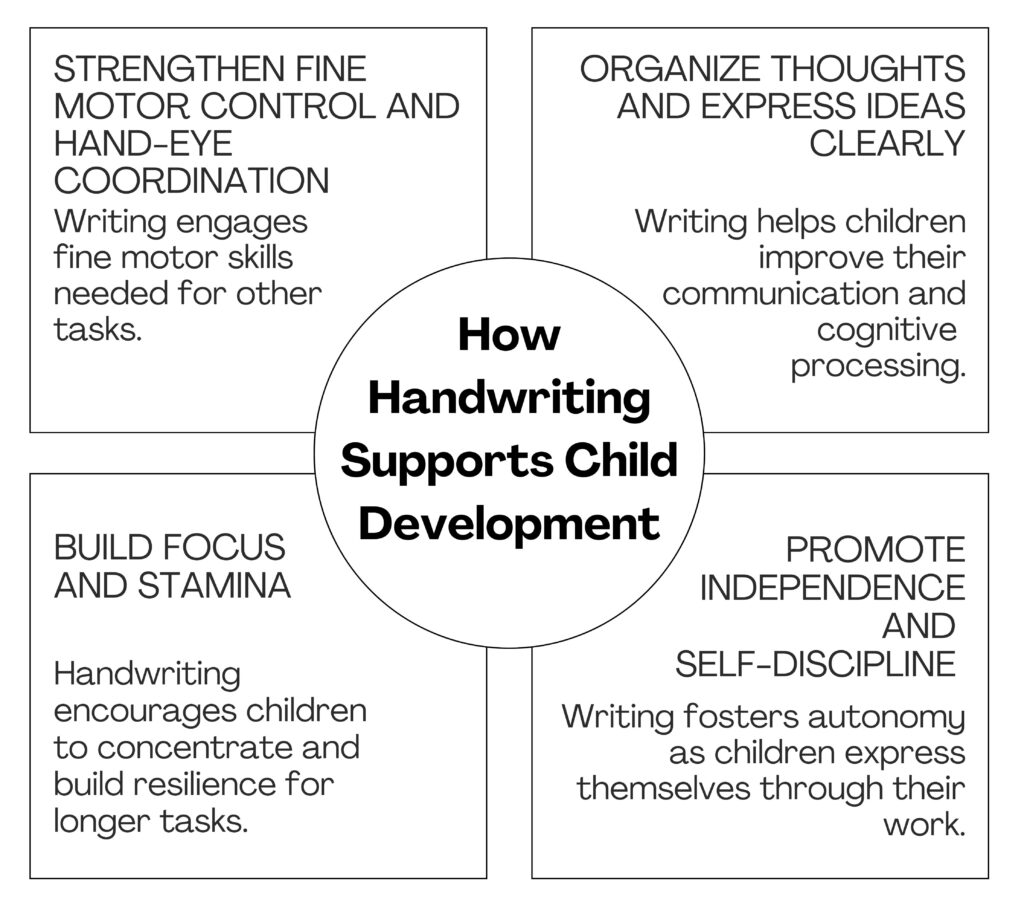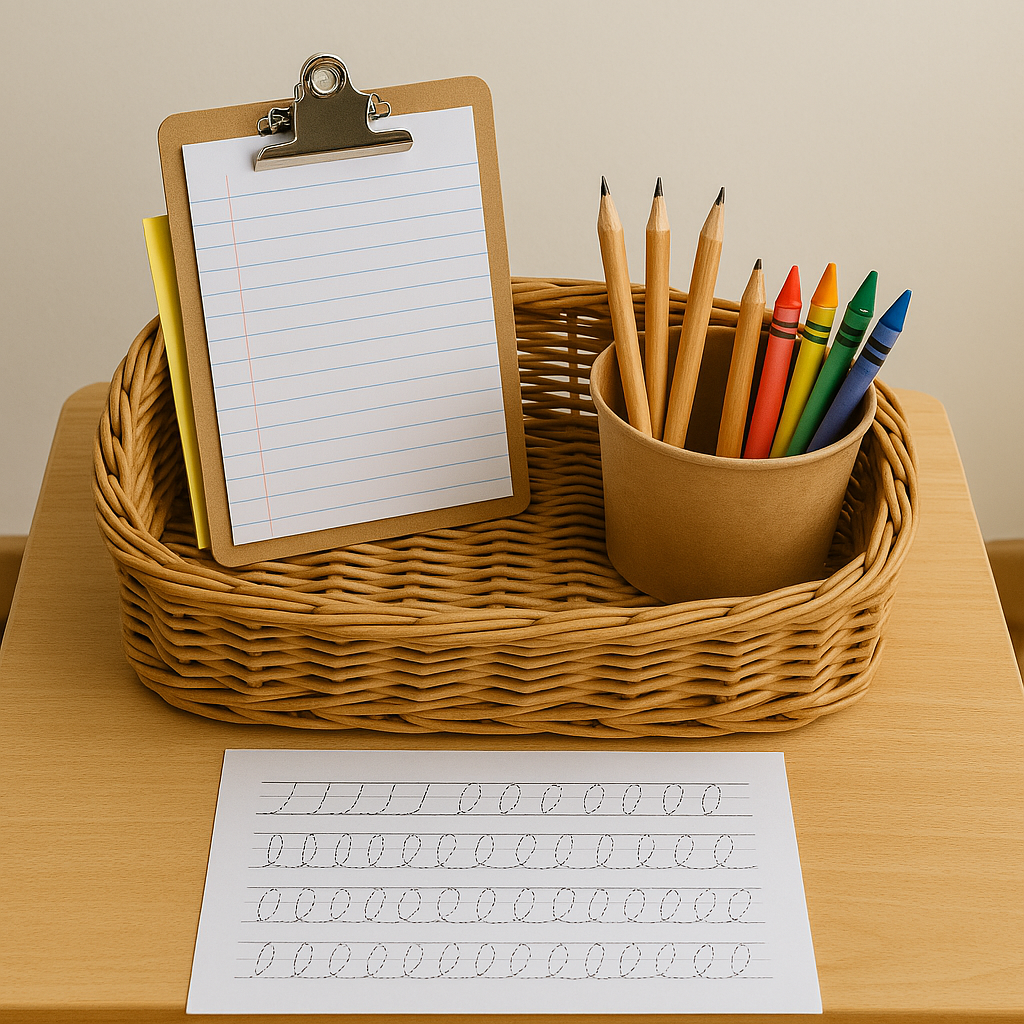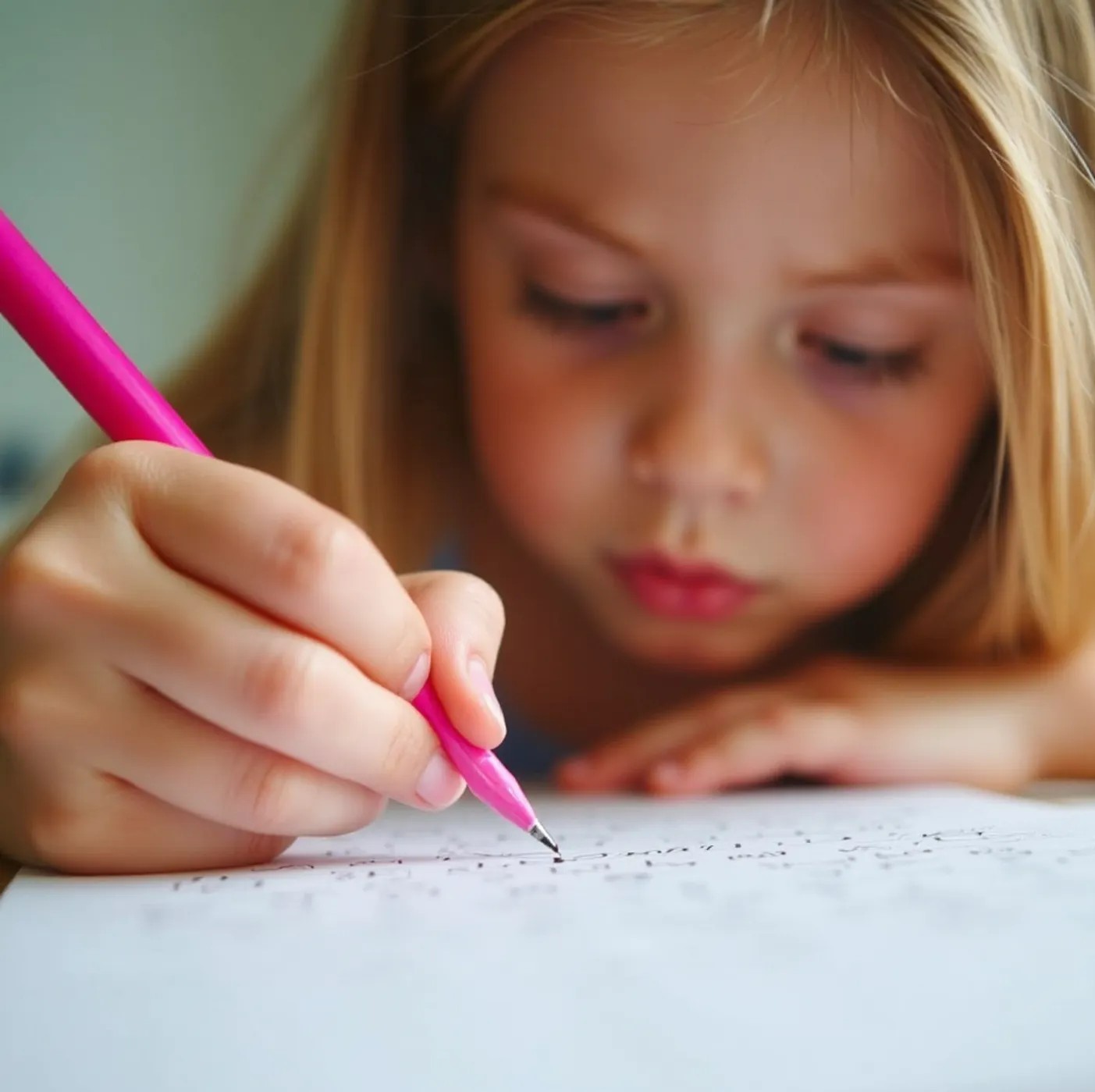Writing Is Disappearing—Does It Matter?
In today’s digital-first world, children are swiping before they’re scribbling. With schools focusing more on keyboards than pencils, handwriting is fading away. The simple, magical act of writing by hand is quietly disappearing, but this shift isn’t as harmless as it seems.
Handwriting isn’t just about neat letters—it’s a critical skill tied to thinking, memory, and motor development. It’s about self-expression, creativity, and connection. When we skip handwriting practice, we’re not just skipping a skill but removing a foundational part of learning.
The Impact of Digital Writing on Spelling
The rise of digital writing is creating significant spelling issues. With autocorrect and spell-check, children don’t store the correct spelling of words in their brains. This affects their ability to recall and use words correctly, making spelling a challenge. As a result, the practice of handwriting and learning spelling by hand has become less effective, impacting a whole generation’s ability to spell confidently.
What Happens When Writing Is Ignored?
When children don’t get enough time to practice handwriting, they lose a chance to slow down and connect with their thoughts. Writing is a quiet form of magic—it builds confidence, clarity, and calm.
Without enough writing practice, children may experience:
- Weak reading and spelling abilities: They struggle with spelling and reading comprehension.
- Difficulty processing information: Writing helps children process information more effectively.
- Frustration with writing tasks: Without practice, children may feel overwhelmed and give up easily.
- Missed opportunities for creativity and storytelling: Writing fosters imagination and expression, which digital tools can’t replicate.

Montessori’s Approach: Writing as a Path to Growth
Montessori educators understand the transformative power of handwriting. Writing isn’t just a skill in Montessori classrooms—it’s integrated into everyday learning, providing hands-on, real-world experiences. Here’s how Montessori keeps writing alive:
- Children write before they read: Writing empowers children, making them feel confident in their communication skills.
- Tactile materials like chalkboards, metal insets, and sand trays make writing fun and engaging.
- Writing connects with real life: Children practice writing by labeling items, journaling, and even writing letters to friends.
- Cursive writing is introduced early: Cursive promotes natural hand movements, encouraging fluid writing and creativity.
In Montessori, writing is not just about forming letters—it’s about fostering joy, purpose, and confidence.
How Montessori Keeps Writing Alive
Montessori understands that writing is more than just a task—it’s a vital part of a child’s development. Here’s how Montessori nurtures writing:
- Children write before they read, empowering them through self-expression.
- Tactile materials like chalkboards and sand trays make writing engaging and sensory-rich.
- Real-life connections, such as labeling, journaling, and writing letters, make writing meaningful.
- Early introduction of cursive helps develop natural, fluid movements, enhancing motor skills.
Montessori doesn’t just teach handwriting—it makes it an exciting, joyful experience that builds confidence and self-discipline.
Bringing Writing Back Home
Whether you homeschool, unschool, or support your child after school, here are simple ways to nurture writing at home:

- Create a writing basket: Fill it with interesting paper, envelopes, and fun writing tools.
- Offer choices: Provide notebooks, clipboards, chalk, and colored pencils to spark creativity.
- Encourage writing for real purposes: Help your child create shopping lists, thank-you notes, or signs for a pretend store.
- Slow down: Let your child see writing as meaningful and not rushed.
Ready to Start Practicing?
To help your child practice and build confidence in their handwriting, we’ve created a simple stroke practice sheet. [Download it here] and begin exploring the joy of writing today.

At Montessori Hive, let’s practice handwriting. It’s not outdated—it’s foundational. Let’s not lose it.
